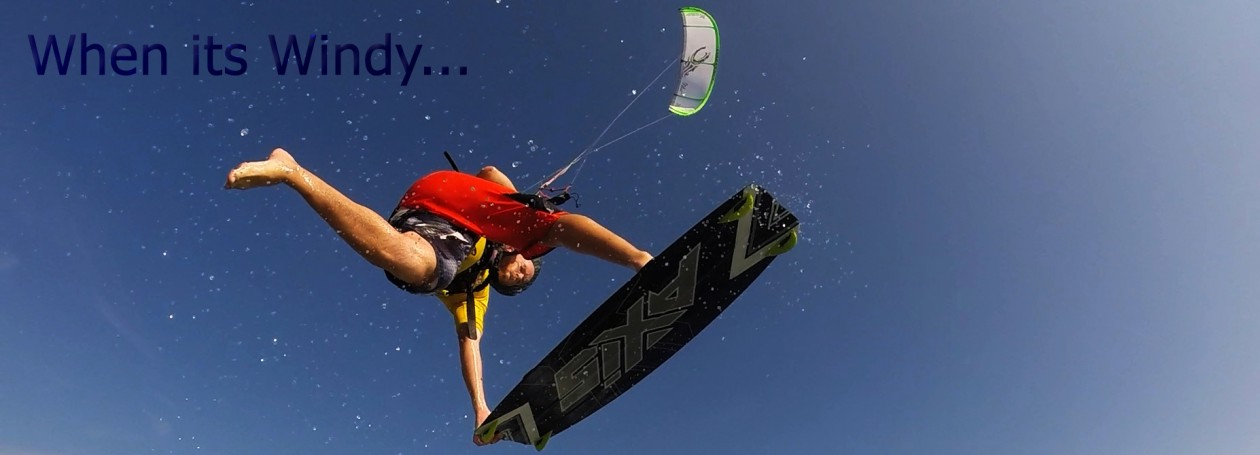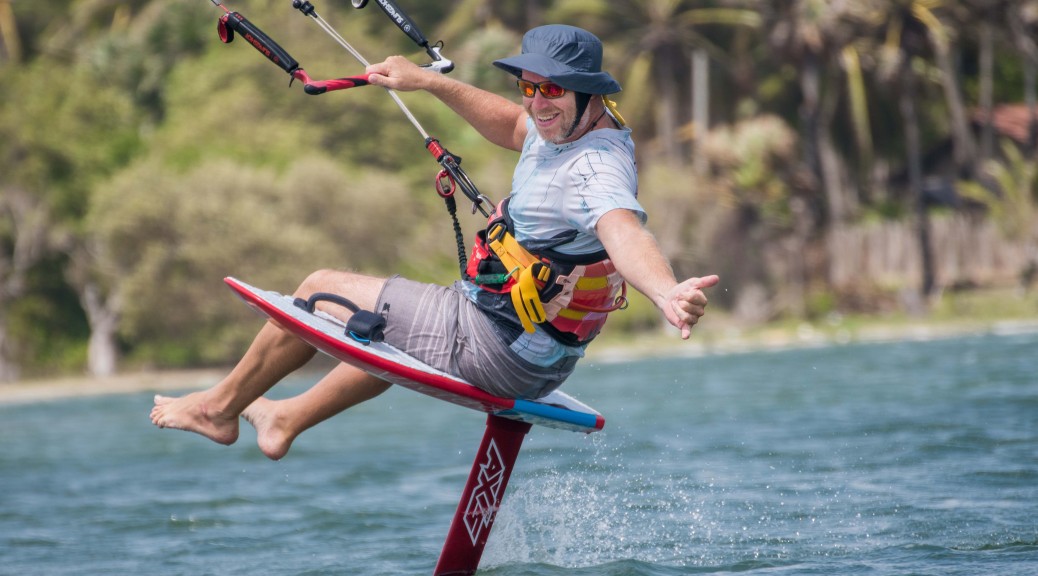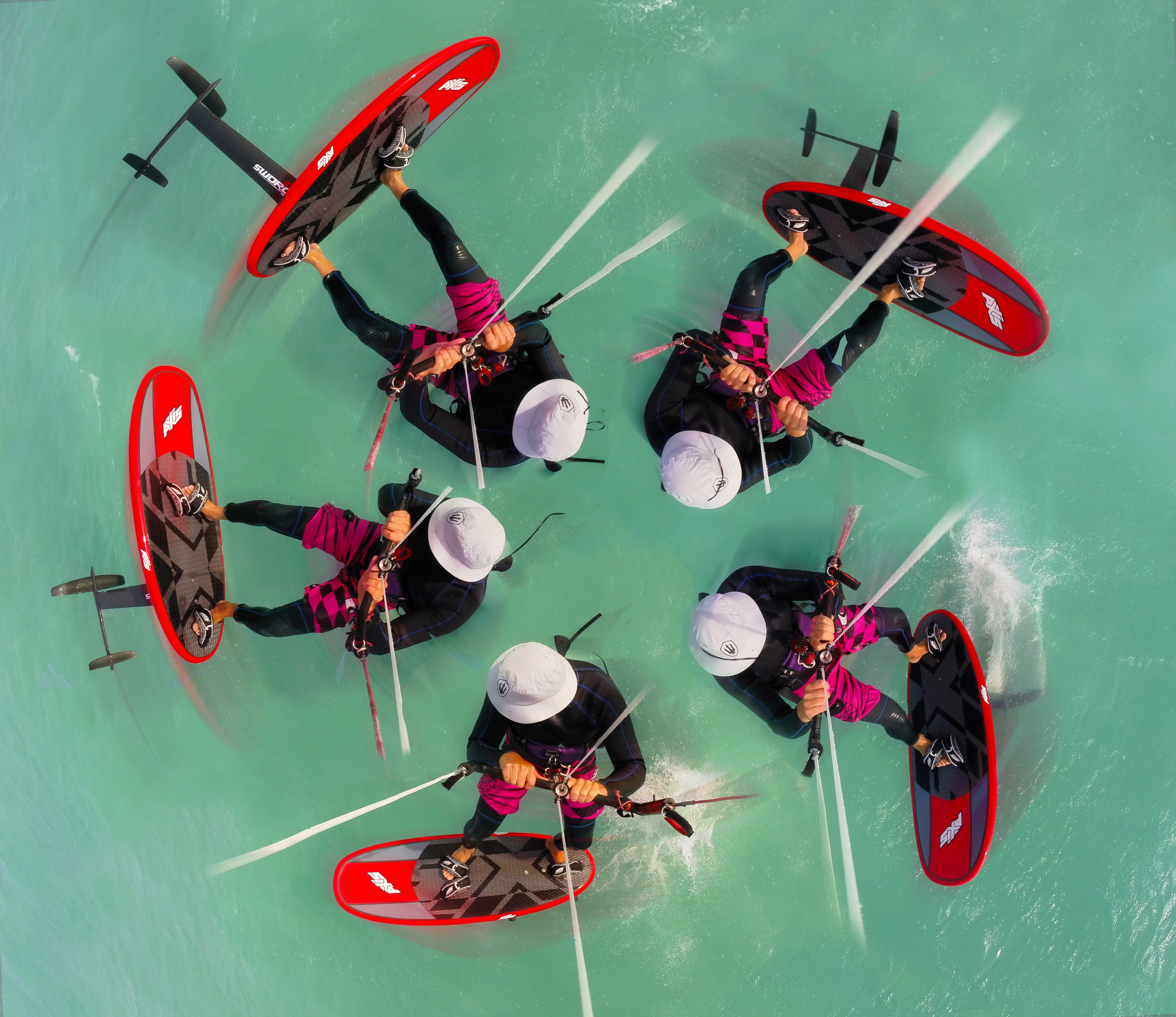The last two summers saw Cathy and I visiting Sri Lanka. I concentrated mainly on my Kite foilboarding both as a means of transport and just general freeride . If I could foil to my destination and there was still daylight, I’d skip the tuk-tuk or taxi to ride there and back. The coastline here lends itself to exploring with the foil. The winds in Sri Lanka are generally strong in the summer time, blowing mainly from the SW. At 100kg I spent nearly the whole summer on a 6/7m with a handful of days on a 10m. This summer there were only 2 days where I couldn’t foil… due only to unseasonal rain.
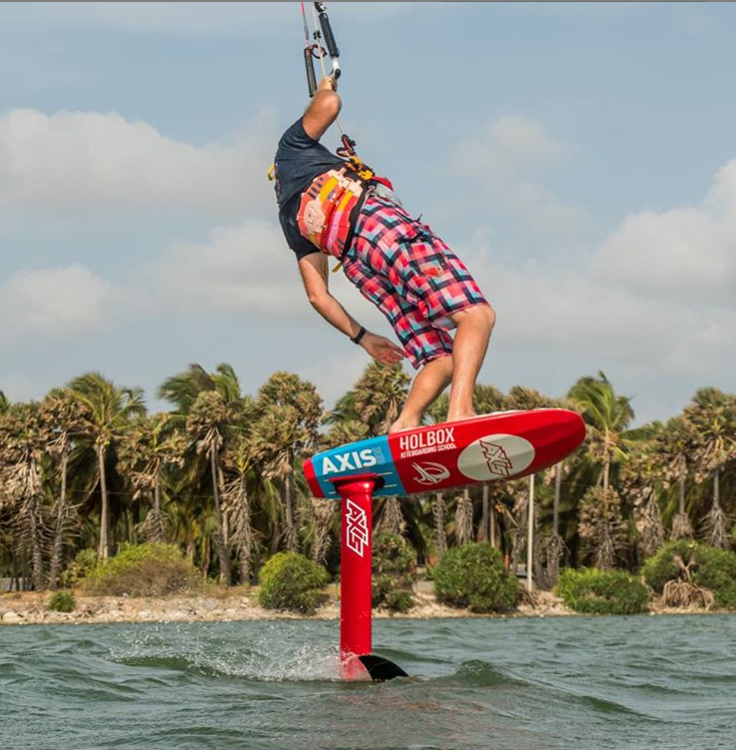
The sea is quite choppy during the summer season with some foilable although not world class waves. The lagoons are flat and great for learning or training freeride manoeuvres. Just watch out for the varying depths and sometimes shallow water. There is something for all levels of foiling but you will have to decide on the conditions that you like best. The winter season has different strength and direction of winds of which I have no experience. This post only deals with the summer season from May until the end of September.
Kappalady Lagoon & Sea (Summer Season)
Wind strength 16-22 knots Smooth stable wind.
The wind in Kappalady is much smoother than Kalpitya or Puttalam Lagoon however the lagoon is much smaller…
Here’s a video of Kitefoil from Kappalady to give you an idea of the usable area.
Foiling in Kappalady lagoon is challenging but it is still one of my favourite flatwater spots. The area where foiling is realistic in the lagoon is maybe 100m by 100m. This means great conditions for practicing high numbers of turns, but not so great if what you want to practice is long runs.
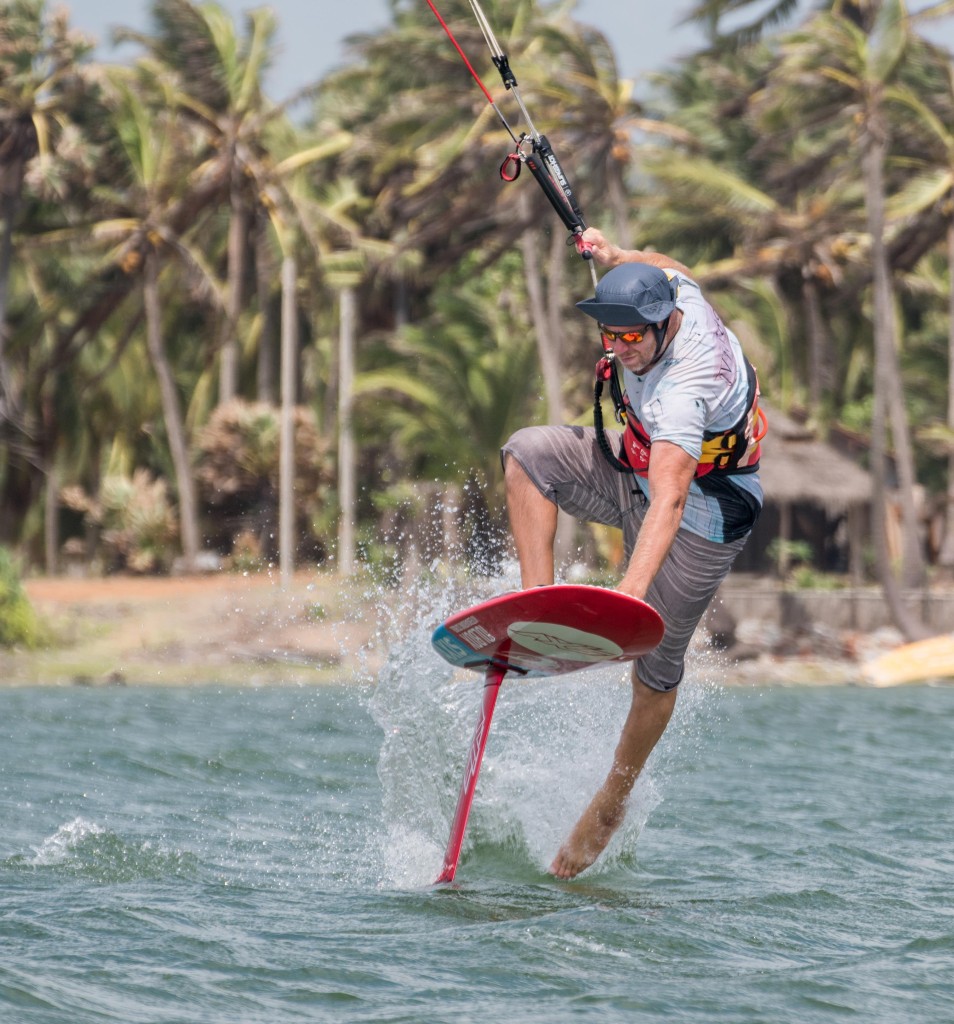
If you are going to foil in this lagoon, you will need to learn where the deep areas are. I use a 90 mast happily in the deep areas. The change from deep to shallow is very dramatic so watch out. The photo below shows in green the deeper area but please be aware that the lagoon changes from year to year. The great thing about the area is that you will normally have it to yourself as beginners tend to avoid going so far down the lagoon.
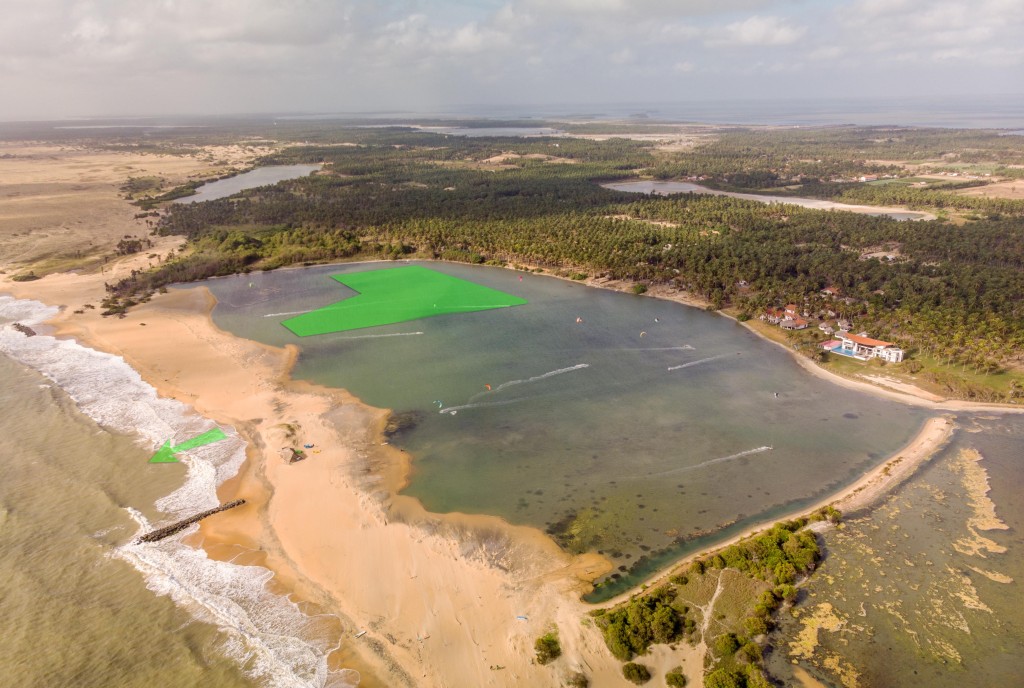
There are some good foilable waves that can be found straight out from the lagoon about maybe 500m to 1km from the shore. Be aware that the shore break can be pretty formidable when the wind is up. Best spot for entry this year was just downwind of the sea defense behind Ilfram’s cocounut shack. See green arrow on above photo.
Also be aware that there is a military practice range to the North between Donkey Point and Kappalady. Check with the guys at Kite House Café or Kite Kuda before entering this zone. If the area is being used it’s not allowed to enter. I’ve seen it when the area was live and some of the explosions in the sea are immense.
Kalpitya Lagoon (Summer Season)
Wind strength 16-22 knots – gusty
This lagoon is much bigger than Kappalady as is it’s foilable area. This lagoon is more suitable for learning the basics and for making nice long runs. However I would strongly recommend the use of a shorter mast 75cm or shorter. At most tide states you will be able to use a foil with strut/mast of this length. There are some shallower areas but if you check with any of the schools they should be able to point them out to you.
I used a 90cm mast and found the area out to the east of Rascals towards Sri Lanka Kite to be the most usable area. Don’t forget that the lagoons change over time so always check with the locals first.
The size of this lagoon is great for learning to foil and for general freeride foiling but watch out for the occasional fishing net and gusty wind. The Lagoon can also be quite be busy with beginner kiters so keep your eyes peeled. Due to the varying depths and number of beginners I don’t recommend Kalpitya Lagoon as a good place for high performance / race foil training.
Alankuda Beach
Wind Strength 16-22 knots – Smooth winds
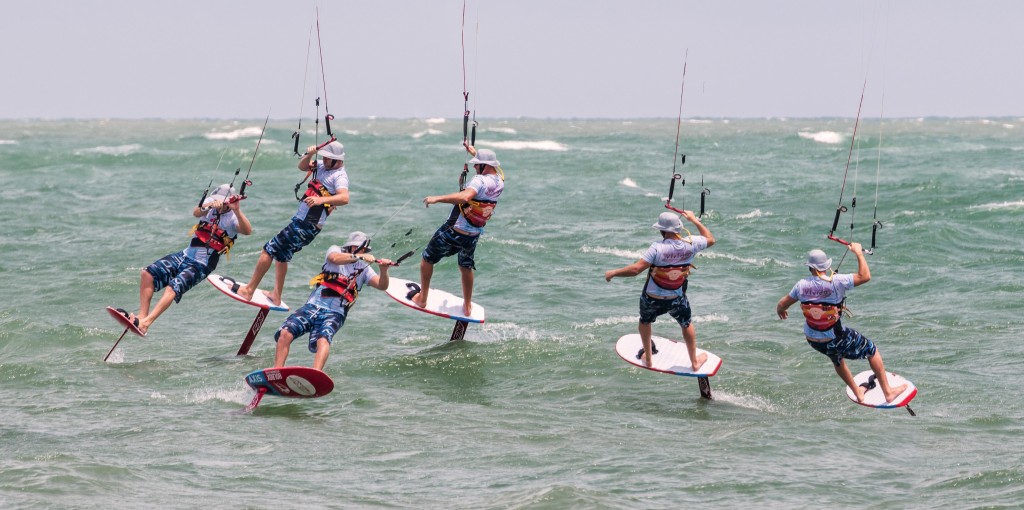
For learning to foilboard this spot is not ideal unless the wind is light, better to go to Kalpitya. However for competent freeride foilers the area is very rideable and great fun but expect big chop and waves. Longer masts/struts of 90cm and longer are recommended . There are two lines of some very foilable waves just downwind from the Naval look out tower these seem to be at their best on spring tides especially if the wind shifts from on-shore to side shore. The prevailing wind direction in the photo below is from left to right or Southwesterly.
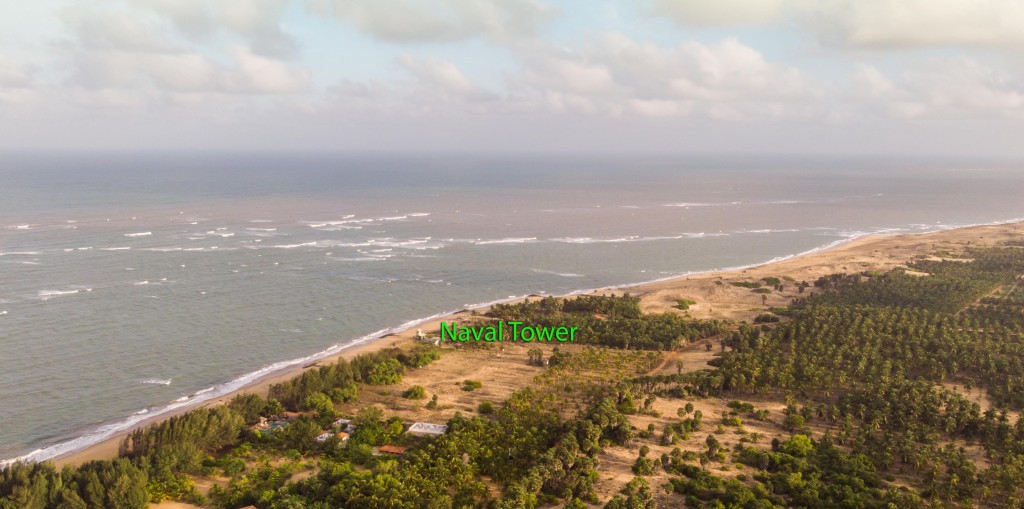
The shore break on most of the North Western coastline can be pretty heavy if the wind is onshore so take care entering the water. At Alankuda beach the shore break is actually a bit lighter than most spots nearby.
The only useable kite launch areas are from Alankuda Kite School at Bar Reef Resort and Udekki Hotel however don’t expect there to be many other kiters to help you launch and land. Self launch and land is the order of the day.
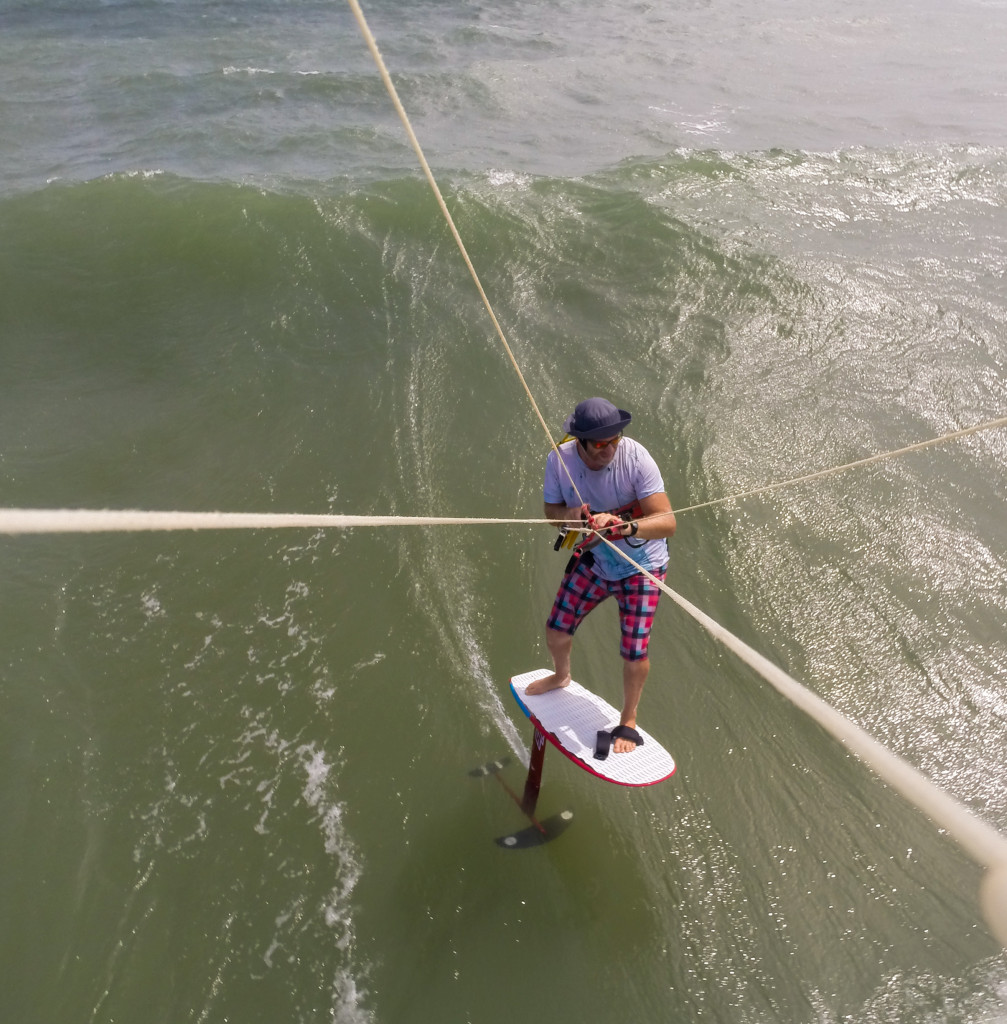
This area is a good start point for a downwinder to Kappalady lagoon or even Kalpitya Lagoon via Donkey Point if the military aren’t practicing. Take care of the depth around donkey point.
You’ll find big ridable wind swell between Talawila and Alankuda Beach just in front of the wind turbines on the way down to Kappalady.
Puttalam Lagoon
16-22 knots Smooth to Gusty
This area has a massive potential for foiling due to its size. Accessed most easily by boat from Kalpitya Harbour or from a kite trip to one of it’s islands (vella, Ipantivu etc). Talk to boat captains or trip organizers to find out deeper and shallower areas. The lagoon is huge and borders Wipattu national park on its Northwestern Shoreline. I have only experience of the Northern part of the lagoon from Kalpitya up and there is some serious space to explore. Last summer we did a huge 150km downwinder from Kalpitya through the Puttalam Lagoon to Mannar with Freeriders extreme Kite tours. If you get chance definitely worth doing. I intend to explore Puttalam lagoon more next year.
Vella Island
Always on the list of trips to do on a Srilankan kite holiday. It is best known to freestylers but is great for foiling too. Most of the freestylers will be tight up against the island giving you lots of space just downwind. Check the depths with boat captains or instructors first as sands are always shifting.
